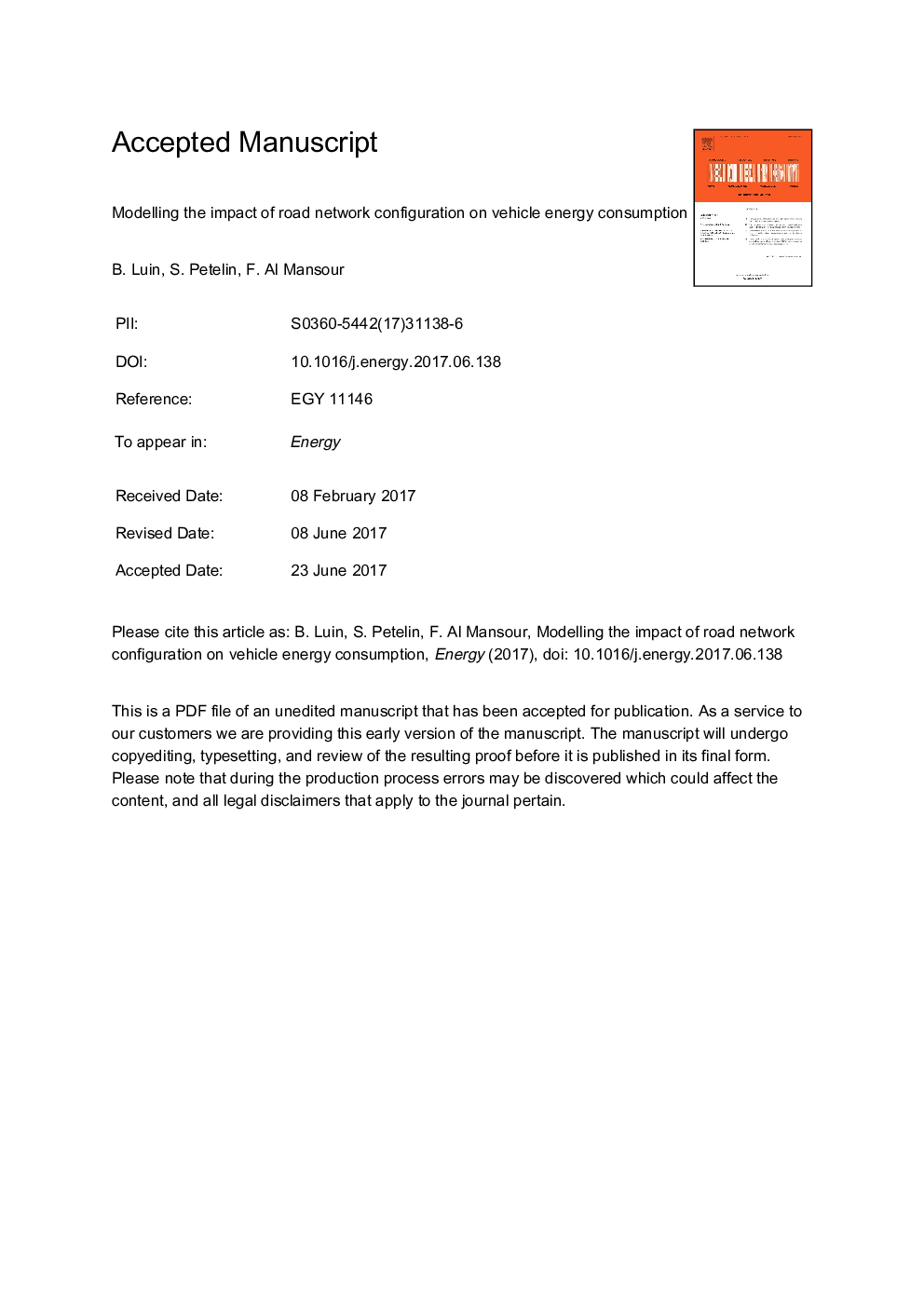| Article ID | Journal | Published Year | Pages | File Type |
|---|---|---|---|---|
| 5475749 | Energy | 2017 | 32 Pages |
Abstract
The paper shows that road geometry has a great impact on overall fuel consumption and emissions. Some roads connect traffic origins and destinations directly, while some take winding, indirect routes. Indirect connections result in longer distances driven and increased fuel consumption. A similar effect is observed on congested roads with stop and go traffic and on mountain roads with many changes in elevation. In this light, we propose a methodology for analysis of road networks based on energy consumed by the vehicles and the energy needed to build more efficient connections. This framework takes into consideration traffic volume, shares of vehicle classes, road geometry and energy needed for road operation and construction. Its application was illustrated through two case studies, one with macroscopic traffic data and one with microscopic traffic simulation that can also be applied for urban road network optimization.
Keywords
Related Topics
Physical Sciences and Engineering
Energy
Energy (General)
Authors
B. Luin, S. Petelin, F. Al Mansour,
